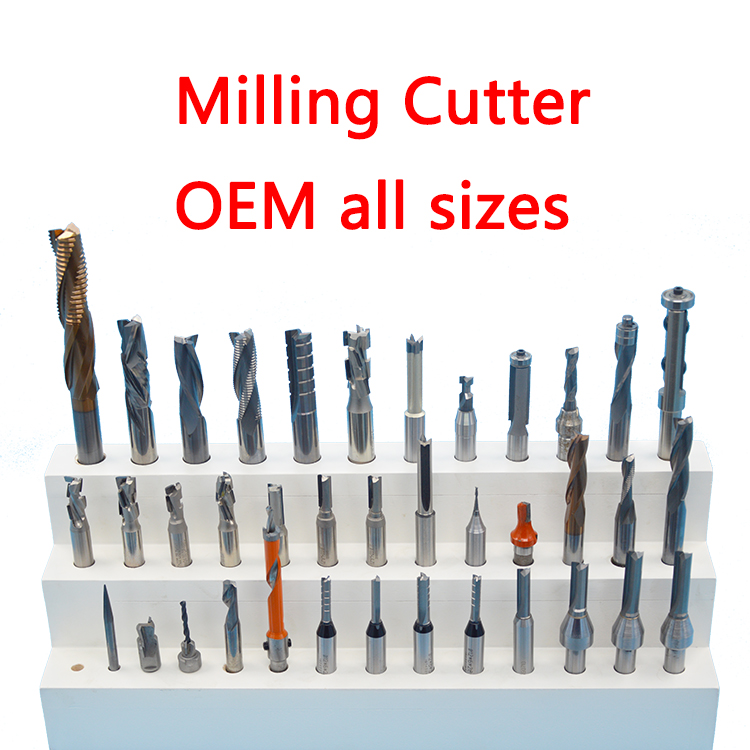7 Tips for Choosing the Right End Mill for the Job
There’s no secret that machinists tend to speak their own language — even in something as simple as basic math. The rest of the world starts counting at the number 1. But ask a machinist to explain how they measure, and they’ll tell you that it all begins at one-thousandth of an inch (0.001”).
When we talk about cutting tools, it’s very much the same thing. Machining terminology is not the same to a layman. To the outside world, the terms drill bit and end mill are often used interchangeably, but that can create confusion when referring to the specific tooling required in CNC machines. Industrial CNC (Computer Numeric Control) machines use rotational cutting tools called end mills to remove material.
What are end mills and how do they differ from drill bits?
Drill bits plunge vertically into material to create holes while end mills typically cut horizontally and laterally, but most mills can actually cut vertically as well.
Choosing the Right End Mill for Your Job
End mills are designed with specific purpose and each tip shape offers a unique clearing path for various applications. Deciding what end mill to choose is largely based on the project, what kind of material needs to be cut and the desired surface finish. Choosing the wrong cutting tool can quickly damage a work piece, causing you to scrap an entire batch. Not only is that a huge waste of time, but also a significant cost to your organization.
5 Ways to Reduce Scrap in Your Metal Cutting Operations
There’s a lot to consider when choosing the right end mill for your CNC operation. We’ve laid down a few important tips from Machining News to help you select the right end mill:
1. End Mill Length
First, decide the depth your end mill must cut. Choose the shortest length end mill that can still make the cut. The reason? Choosing the shortest length greatly increases the stability of the tool. This will allow for more aggressive feeds and speeds, while reducing the tendency for the tool to break.
2. End Mill Materials
Two of the most common materials used in the manufacturing of end mills are high speed steel (HSS) and carbide. HSS is useful in older, slower, or less rigid machines as well as one off or very short run production. It will run slower, but is less expensive, less brittle and more forgiving of unstable conditions. Carbide is preferred in CNC machine tools where higher speeds, fewer tooling changes and increased productivity are required. In these applications, the higher cost is easily justified by longer tool life span and shorter cycle times.
3. Flute Count
Flutes are the helical grooves that wrap around the sides of an end mill. A smaller number of flutes (2-3 flute tools) will offer more flute space for long chipping materials such as aluminum. A larger number of flutes reduces the flute space, but can offer increased productivity in shorter chipping materials such as medium to high carbon steel and iron. For steel, stainless steel, high temp alloys and iron, a four flute endmill is preferred for slotting applications and can be a great general-purpose tool. Higher flute counts should be reserved for applications with a low radial depth of cut to allow for chip evacuation.
Note: Proper chip evacuation is important because re-cutting chips will lead to significantly reduced tool life
4. End Geometry
Choosing the right end mill geometry is critical to the tool’s success. Paying close attention to the materials that the manufacturer recommends for a given tool can help to ensure your success. Of equal importance are the speeds and feeds the manufacturer recommends for that material.
5. End Mill Coatings
Coatings are helpful in reducing friction and protecting the carbide from the heat that is generated in cutting. Some coatings are more suitable for certain materials. Once again, paying attention to the manufacturer’s recommendations is the easiest way to make sure you are using the correct coating.
6. Tool Life
Cheaper isn’t better. If you have high production and heavy workloads, it’s critical to invest in the right tooling that can keep up with the volume of work. Choosing inexpensive or inadequate tooling costs time and money on wasted material, scrap, wasted tool spend and added wear and tear on your CNC machines.

